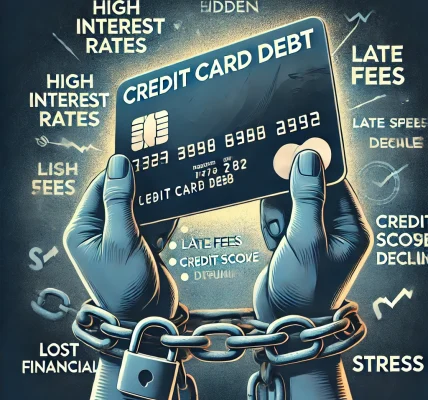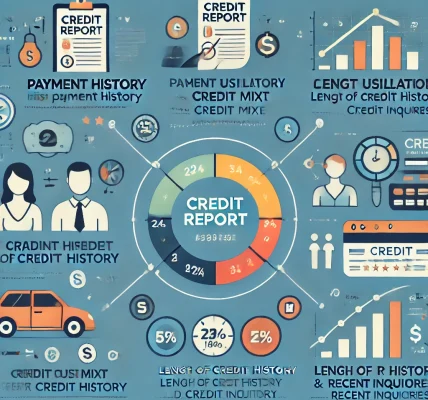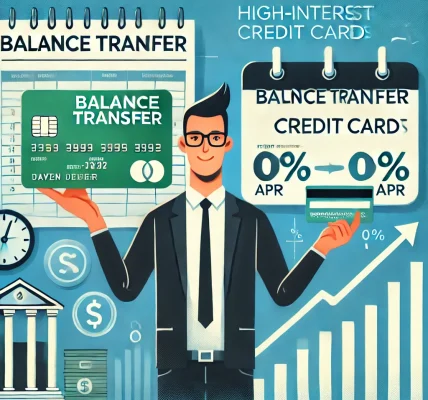A good credit score opens doors to financial opportunities, from securing loans with favorable interest rates to increasing credit limits and even enhancing job prospects. If your credit score isn’t where you want it to be, don’t worry—there are concrete steps you can take to improve it. This DIY guide will walk you through proven strategies for boosting your credit score in 2025.
Understanding Your Credit Score
Your credit score is a numerical representation of your creditworthiness, typically ranging from 300 to 850. The higher the score, the better your chances of securing credit at favorable terms. The primary factors that influence your credit score include:
- Payment History (35%) – Your track record of making timely payments.
- Credit Utilization (30%) – The ratio of credit used to available credit.
- Credit History Length (15%) – How long your credit accounts have been active.
- Credit Mix (10%) – A diverse mix of credit types, such as credit cards and loans.
- New Credit Inquiries (10%) – The number of new credit applications you’ve made.
Step 1: Check Your Credit Report Regularly
The first step in improving your credit score is to obtain and review your credit report. You can get a free copy from credit bureaus like Experian, Equifax, or TransUnion. Look for errors, outdated information, or fraudulent activities and dispute any inaccuracies.
Step 2: Pay Bills on Time
Since payment history accounts for the largest portion of your credit score, paying your bills on time is crucial. Set up automatic payments or reminders to ensure you never miss due dates for credit cards, loans, and utility bills.
Step 3: Reduce Your Credit Utilization Ratio
Your credit utilization ratio is the percentage of your available credit that you’re using. Keeping it below 30% is ideal, but under 10% is even better. Ways to lower your utilization include:
- Paying off balances in full each month.
- Requesting a credit limit increase (without increasing spending).
- Using multiple credit cards responsibly.
Step 4: Avoid Unnecessary Hard Inquiries
Each time you apply for credit, a hard inquiry is recorded on your report, which can lower your score slightly. Avoid multiple applications within a short period. Instead, research credit products before applying and use pre-qualification tools that don’t affect your score.
Step 5: Keep Old Credit Accounts Open
The length of your credit history matters. Even if you don’t use a particular credit card frequently, keeping it open can improve your score by extending your average account age. Closing old accounts may increase your credit utilization ratio and reduce your overall score.
Step 6: Diversify Your Credit Mix
Having a mix of credit accounts, such as credit cards, auto loans, and mortgages, can positively impact your score. However, don’t take on new credit just for the sake of improving your mix—only borrow when necessary.
Step 7: Use Credit-Building Tools
If you have a limited credit history, consider using tools designed to build credit, such as:
- Secured Credit Cards – Requires a deposit but helps establish credit.
- Credit-Builder Loans – Allows you to make payments into a locked account, improving payment history.
- Authorized User Accounts – Becoming an authorized user on a responsible person’s credit card can boost your score.
Step 8: Settle Any Outstanding Debts
Unpaid debts, especially those sent to collections, can damage your credit score. If you have overdue accounts, consider:
- Negotiating with creditors – Some may allow partial payments or settlements.
- Debt consolidation – Merging multiple debts into one loan with a lower interest rate.
- Seeking professional credit counseling – A reputable agency can help create a manageable repayment plan.
Step 9: Monitor Your Credit Score Regularly
Use credit monitoring services to track your progress and get alerts for changes in your score. Many banks and financial apps offer free credit score tracking to help you stay on top of your financial health.
Step 10: Be Patient and Consistent
Improving your credit score is a gradual process that requires consistency. Avoid quick-fix schemes that promise instant results, as they may be scams. Instead, follow these proven strategies and practice responsible credit habits for long-term financial success.
Final Thoughts
Building and maintaining a strong credit score is crucial for financial stability. Start implementing these steps today, and over time, you’ll see significant improvements in your credit score, leading to better financial opportunities and peace of mind.




